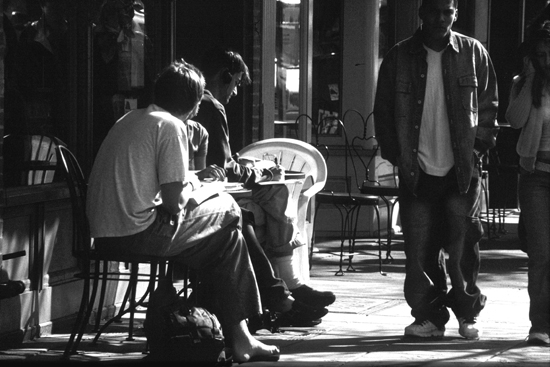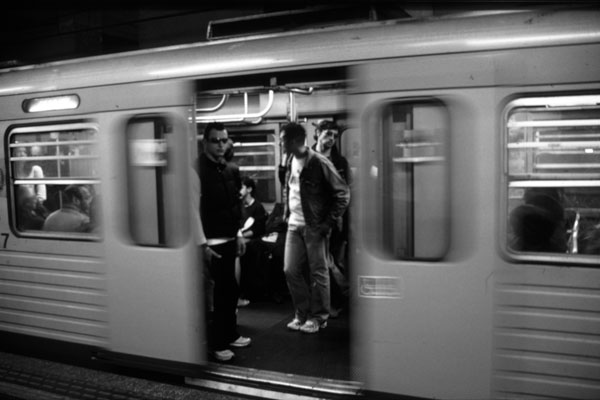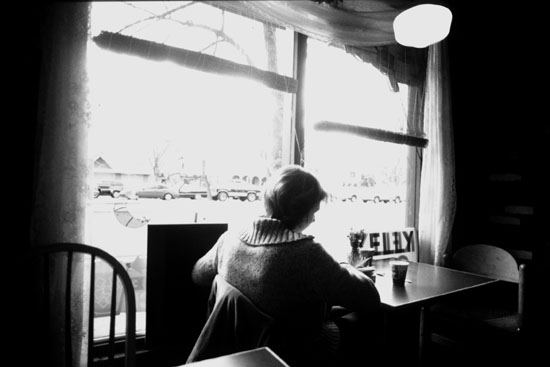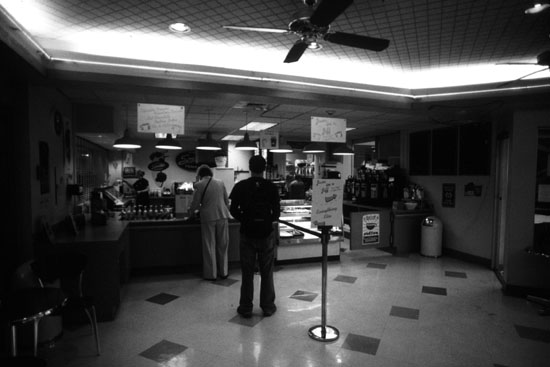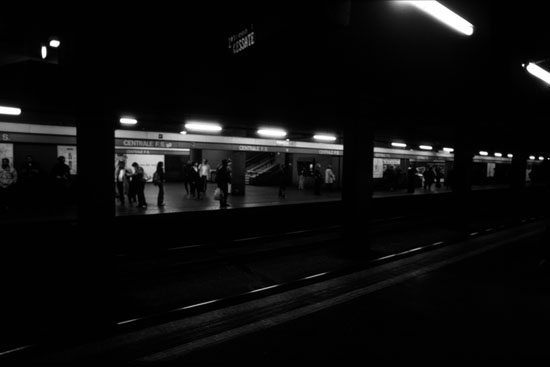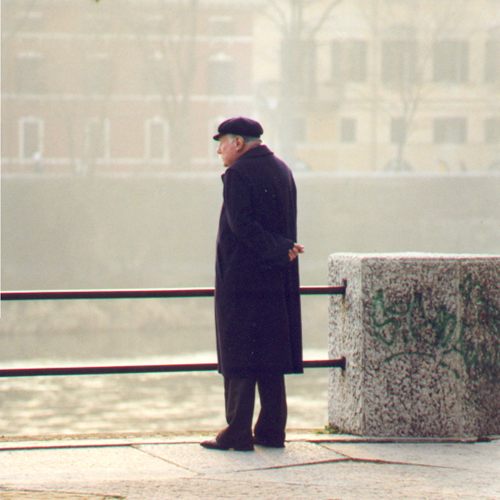Notes on Waiting
Daniel Barbiero & Cristiano Bocci
November 2018
Waiting as Action & Availability
One is waiting for someone or something. There is nothing to be done until X shows up or Y takes place. A state of suspended activity or forced inactivity that—ironically–is itself an activity. (Thus, “to wait” being a verb and belonging to a class of words describing actions.) And thus the paradox of waiting: It’s an activity that involves no activity. In waiting, one does something by (apparently) doing nothing. One has to occupy oneself by being unoccupied.
There’s a natural relationship between waiting and boredom, waiting and impatience. Impatience that the awaited person should arrive or event should be realized in order that one can get on with one’s life. Boredom until that happens.
At the same time, waiting entails a state of availability, of being open to whatever it is we are expecting. (Expectation is a variety of availability—availability in one of its more acute modes.) The tension built into waiting is the tension of anticipation or, put another way, the other side of impatience. One is impatient to the extent that one expects something and wishes to surmount whatever it is—in this case, time—that separates one from what is expected.
How We Wait
If waiting is an action described by a verb, how we wait is a modification of that action as described by an adverb: immobly, patiently/impatiently, nervously, vacantly, etc. Translated into physical postures and gestures, we may move only the eyes or head in the direction in which the awaited person is expected to appear; we may be more or less immobile, stare vacantly through sheer boredom or in a daydream, fidget nervously through the pent-up energy of anticipation, etc. In the presence of others (also waiting?) we may avoid their glance, maintain a distance from them, ignore their presence generally to the extent that we can. That is, until the time lengthens to the point where the continued presence of another becomes an embarrassment that we’re forced to address. (Smile at the other person? Shrug? Strike up a conversation? How to do this in a crowded and delayed subway car—simply avoid the whole matter by looking at the floor or out a window?) Why an embarrassment? Because we’re being observed and on top of that, being observed (apparently) doing nothing—hanging around, idling, loitering.
Waiting in the presence of others is a certain way of being-in-public, a kind of being permeated by self-consciousness. Waiting in the presence of others I become an object—of curiosity, irritation, indifference. (Fidgeting while waiting may be the product not only of impatience or anticipation, but of self-consciousness in the presence of another. How, if at all, do these gestures differ in appearance when driven by these different motivations?)
Time & Waiting (the Time of Waiting)
Because it involves the doing of not-doing, waiting presents a certain perspective on the structure of time. Through waiting, we push time as we ordinarily live it to a kind of crisis, of a turning. We see its other side. (From the other side of ourselves?)
When we’re actively engaged in something, absorbed in whatever it is we’re doing, we don’t notice time. Time, to the extent it’s felt as a presence, is present as a transparency—like the air, something that surrounds us but is more or less unperceived. By contrast, waiting makes time palpable, discloses time as a presence thick with implication: of pushing us forward relentlessly, if (apparently) slowly. In doing so it starkly reveals the structure of human temporality. Through waiting, time is shown to be the secret protagonist of one’s personal drama.
Human temporality is the temporality of moving inexorably into a possible future from the ground of a determinate past. (This past is determinate even if its structures of meaning are malleable and open to revision.) Put another way, it is the temporality of moving from one variety of non-being—the non-being of a past that we no longer are—to another variety of non-being—the non-being of a future that not yet is, and that in addition doesn’t have to be. By immobilizing us as we anticipate a concrete state in our immediate future, waiting makes explicit this slippage of one state of non-being to another; it negates the past to the extent that it anticipates the future and reveals the future to be an empty screen on which we project our possibilities. Waiting is thus an interstitial experience; waiting I’m neither here nor there, or rather, I’m here in the manner of not yet being there. I’m outside of myself by being ahead of myself.
Waiting for
Waiting can be expressed in intransitive or transitive form. “I wait” in the former case; “I’m waiting for X” in the latter. The transitive form is telling; it opens a window onto a given truth about waiting—that it means waiting for something. Standing in line at a coffee shop, for instance. The focus here is on the thing expected. In the transitive construction the expected eclipses the person expecting—if the sentence were a measure of music, the accented beat would fall on the X that is expected. And yet it is the person anticipating X that brings about anticipating to begin with.
What this shows is that the experience of waiting is, above all, anticipation, which is to say that through it, the future becomes palpable in the form of what is anticipated. But it becomes palpable as the experience of an uncertain possibility. To wait is to be directed outward toward that possibility, toward that event or person one expects to meet. When I wait for someone or something I experience my environment as a kind of sign pointing toward person X whom I expect to show up at a certain time, or toward event Y which I expect will take place. Everything in my environment points toward this anticipated future, but as a future, it is always just a possibility and not a certainty. Things can always turn out to be other than what I expect them to be.
(In that case, the absence of the expected outcome makes itself present—the anticipated future as negated possibility falls across the future that actually arrives like the shadow of what was supposed to be. We call that shadow “disappointment.”)
The following notes were originally written as background for a dance piece choreographed by Sandra Roachford and featuring Uyen Hoang, which was presented at Dance Place in September of 2018. They appear here in expanded form, with images by Cristiano Bocci.
◊
In addition to pursuing photography, Cristiano Bocci plays electric and acoustic basses and theremin, and provides sound synthesis and live electronics. He collaborates on theater/dance and visual arts projects, and holds seminars on sound synthesis and its applications to improvisation in various music schools.
Daniel Barbiero is an improvising double bassist who composes graphic scores and writes on music, art and related subjects. He is a regular contributor to Avant Music News and Perfect Sound Forever. His most recent release is Transparent Points on Four Axes, with Ken Moore and Dave Vosh.

